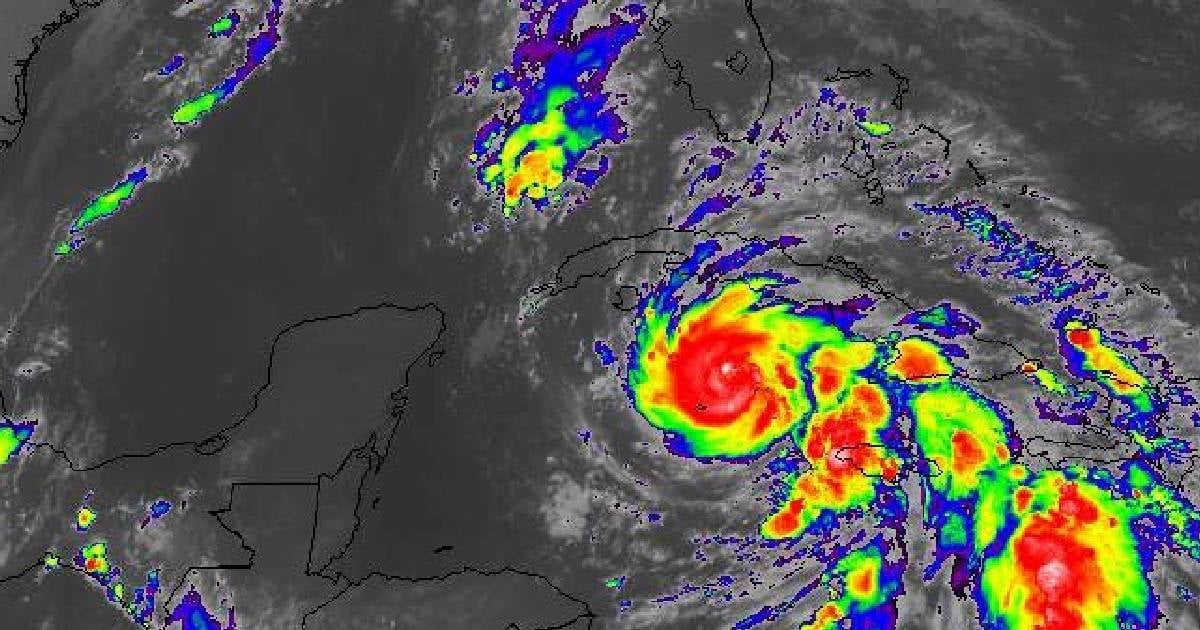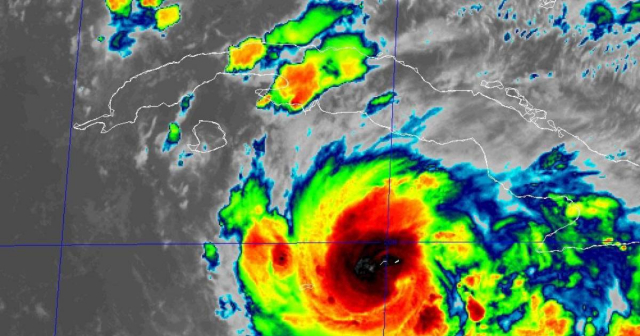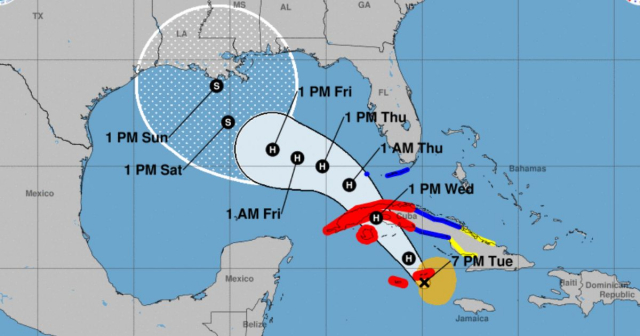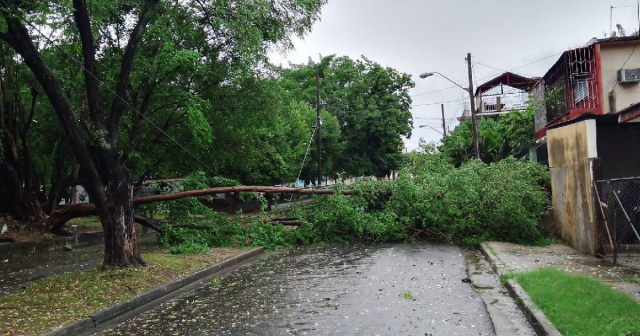
The Forecast Center of the Cuban Institute of Meteorology (INSMET) issued its Tropical Cyclone Alert No. 8 early Wednesday morning, announcing that Hurricane Rafael, categorized as a 1 on the Saffir-Simpson scale, will continue to strengthen.
The maximum sustained winds of Rafael have increased to 130 kilometers per hour, and its minimum central pressure has continued to drop to 985 hectoPascals, as stated in a note shared on its social media.
INSMET reports that at midnight tonight, the center of the hurricane was located at 20.0 degrees north latitude and 80.6 degrees west longitude, approximately 270 kilometers southeast of Punta del Este, on the Isle of Youth.
"The hurricane has maintained a northwest trajectory in recent hours, once again reducing its forward speed to 20 kilometers per hour," the institution warned.
Furthermore, it is expected that in the next 12 to 24 hours the system will continue on a similar path and at a similar speed, moving closer to the waters south of the Canarreos archipelago and gradually increasing in intensity.
So far, there have been recorded rain, downpours, and thunderstorms in the eastern and central regions, which have started to extend toward the western part of Cuba. These precipitation events will continue over the next 24 hours and could be heavy and intense in some areas, with accumulations ranging from 100 to 200 millimeters.
In the early morning hours, winds will blow from the east to southeast in the western and central regions, with speeds of 35 to 50 kilometers per hour.
Starting in the afternoon, winds will shift to the southeast-south, increasing in intensity to between 85 and 100 kilometers per hour, with gusts exceeding this range. The winds will reach hurricane strength in areas close to the center of this tropical system as it moves through the western region.
Strong swells are expected along the southern coast of the central and western regions, with moderate to severe coastal flooding in the south of the provinces of Sancti Spíritus, Cienfuegos, Matanzas, Mayabeque, Artemisa, and Pinar del Río, as well as in the Isle of Youth and the Canarreos archipelago.
Given the current position and projected trajectory of this entity, it is recommended to pay special attention to its evolution and the potential impacts on the national territory, as well as to stay informed through updates issued by the Forecast Center of the Meteorological Institute.
The arrival of Hurricane Rafael poses an additional threat to the Cuban population, which is already facing limitations in access to electricity.
On the night of this Tuesday, the country was facing a record deficit of 1,750 MW in its electricity generation capacity, resulting in power outages of up to 20 hours in various regions.
This deficit has been driven by failures in several thermoelectric plants, including the recent shutdown of unit 4 at the "Carlos Manuel de Céspedes" Thermoelectric Power Station, as well as a shortage of fuel.
What do you think?
COMMENTFiled under:






